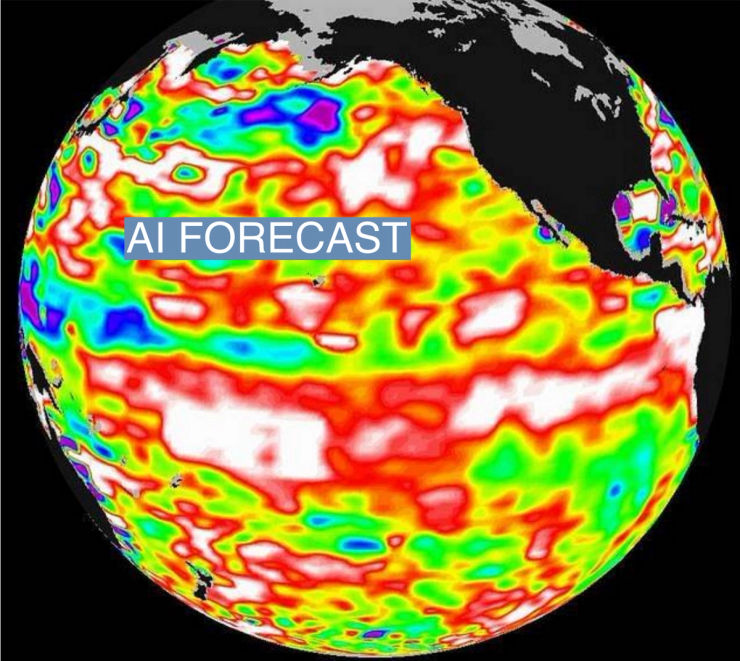The News
Scientists and startups have a new tool to blunt the effects of warmer temperatures in the Pacific Ocean that typically upend global weather patterns known as El Niño: artificial intelligence.
June marked the official start of the latest cycle, which is expected to fuel record-breaking heat over the next year or so.
AI algorithms that are fed satellite images, weather gauge readouts, pictures and text from news articles and social media posts, and other large datasets can reveal patterns that were invisible before, and make reliable predictions about what will happen next. That includes the arrival of El Niño itself, which used to sneak up on geoscientists at the last minute but, with AI, can be forecast more than a year in advance.
“Some of the strongest benefits of AI are in the areas of climate and weather,” said Auroop Ganguly, climate director at Northeastern University’s Institute for Experiential AI and author of a recent study that used AI to study how El Niño changes the flow of major rivers like the Ganges and Amazon. In older computer models of El Niño, he said, “we had to characterize this very complex phenomenon with very simplified metrics. But what we can do now with AI is to extract predictive insights at timescales that are useful for stakeholders.”
El Niño — the effects of which are exacerbated by climate change — is also a major drain on the global economy. A study by Dartmouth College economists in May projected that this El Niño may sap $3 trillion from global GDP between now and 2029 via its impacts on agriculture, public health, and infrastructure — especially with inflation and recession risk already looming over the economy.
Tim’s view
This El Niño will be a test of how well the many climate-related applications of AI and machine learning that have been developed in the last few years can serve to shield lives and livelihoods from its harmful effects.
Many of the impacts of El Niño — crop failure, droughts and wildfires, flooding, the collapse of coastal fisheries, infectious disease outbreaks — are areas in which a growing number of companies and researchers are focusing machine-learning efforts. They hope to speed up the breeding of climate-resistant crops, prepare supply chains for disruption, set insurance premiums, provide early warnings of storms and droughts, and respond to disasters, among other services.
El Niño is the type of system that AI is well-suited to penetrate. It’s the product of natural meteorological processes, especially ocean temperature changes, that are easy enough to measure and observe on their own, but become bewildering and unpredictable (to people, at least) in combination: Precisely how much will a small temperature bump in one remote patch of the Pacific cause a reduction in monsoon rains in India several months later?
Room for Disagreement
One risk in the use of AI for climate adaptation is that access to it remains unequal, especially in contexts where having better predictions confers a business advantage, like AI-driven weather forecasting at a hyperlocal scale for farmers.
“My fear is you end up with boutique, pricey products that big agribusinesses in the U.S. can afford, but smaller operations in developing countries can’t,” said Christopher Callahan, who co-authored the Dartmouth El Niño study. “And then you have farmers taking on huge debt to acquire technologies they need to stay competitive.”
The View From Pakistan
When catastrophic flooding hit Pakistan last year, AI analysts from the Qatar Computing Research Institute processed nearly 2,000 satellite images and more than nine million tweets to provide emergency first responders with maps of the most severe flooding within hours after it happened, and helped optimize the allocation of emergency resources, Muhammad Imran, the engineer who led the team, told Semafor. AI is becoming more widely adopted by humanitarian aid agencies, Imran said, and could be invaluable in El Niño-related disasters.
Notable
- AI-based climate startups are drawing big venture capital investments. In a recent interview with The Wall Street Journal, Amy Francetic, co-founder of Buoyant Ventures, explained why she’s focusing on AI-driven climate solutions, including using artificial intelligence to improve the efficiency of solar panels and fish farms.


